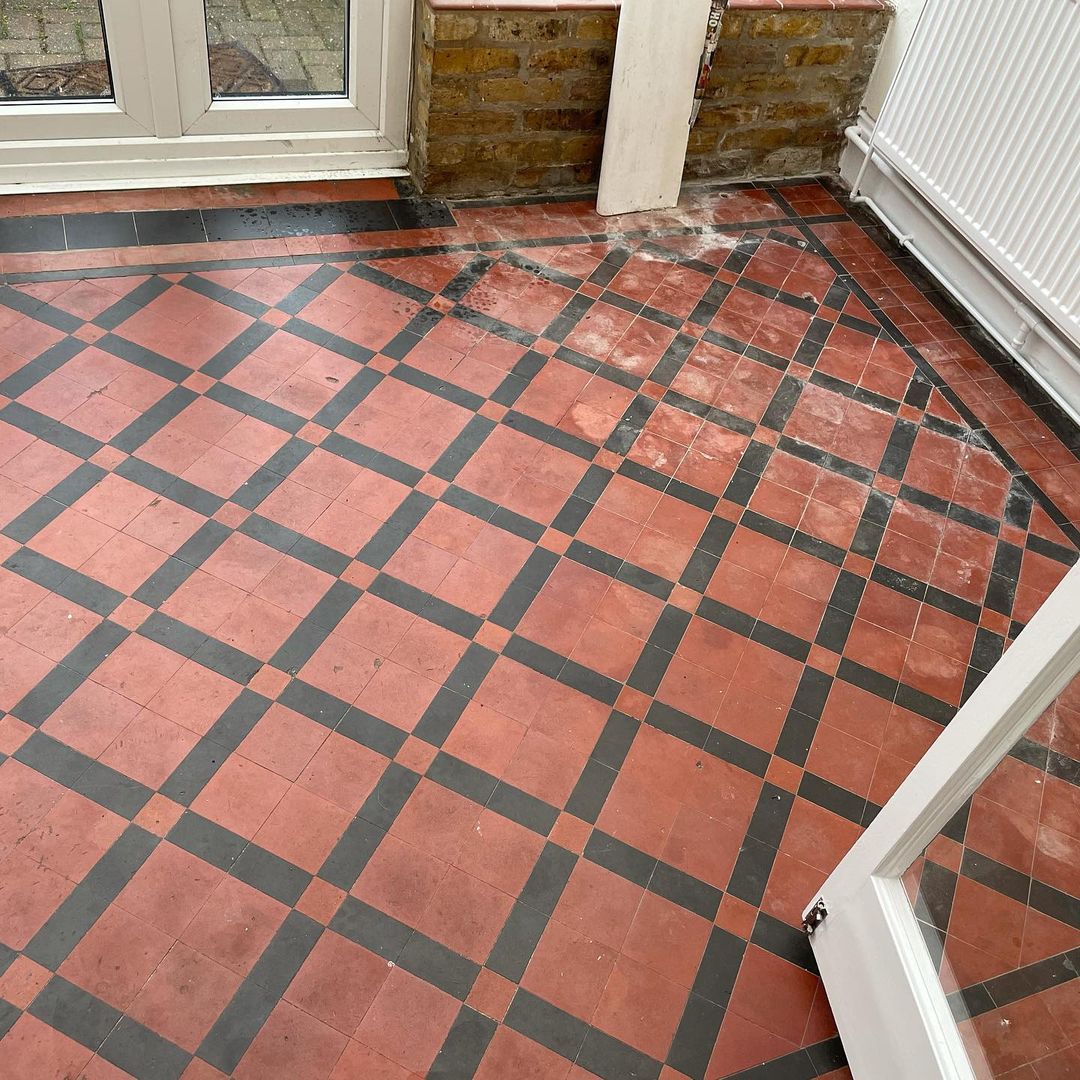This striking Victorian tiled Conservatory floor at a property Birchington-on-Sea was in good physical condition but had been stained with white salt deposits. Additionally, the old sealer on the Victorian tiles had worn down with use and now dirt was becoming trapped in the pores of the tile leaving it looking dull and un-inviting.

The salt deposit issue is often referred to as efflorescence and normally happens when the floor has no damp proof membrane to prevent moisture rising through the floor and evaporating at the surface. In this case however I suspect it was simply due to the over watering of plants, the water naturally contains salt and when the water evaporates it leaves the salt behind. The Southeast of England is known to be a Hard Water area which means it carries a high level of minerals including Calcium.

To renovate the Conservatory floor, I proposed giving it a deep clean to remove the dirt, efflorescence and what was left of the old sealer. Once clean and dry I would then apply a fresh sealer.
Removing Efflorescence from a Victorian Tiled Conservatory Floor
Upon my arrival at the house, my first task was to add protection to the skirting boards and adjacent wooden floors. I then created a strong dilution of Tile Doctor Pro-Clean, a versatile, high alkaline cleaner, this would get deep into the tiles and shift the dirt and grime along with the old sealer.
I applied the solution to the surface and left it to soak into the tile for twenty minutes, allowing it to get to work on breaking down the old sealer, staining and ingrained dirt. I then scrubbed this into the tiles using a Tile Doctor 200-grit burnishing pad fitted to a rotary floor machine. This process was repeated in a couple of areas that had the most stubborn stains. After the clean had been completed, I rinsed the entire floor several times and extracted the resulting slurry using a wet vacuum.
Sealing a Victorian Tiled Conservatory Hallway Floor
I left the floor overnight, allowing the floor enough time to dry and returned then next day to seal the floor, checking first to ensure the tiles had dried sufficiently with a damp meter.
To seal the floor, I applied several coatings of Tile Doctor Colour Grow allowing for thirty-minute drying time between each coat. I chose Colour Grow as it’s an impregnator that protects from within by occupying the pores in the tile thereby preventing dirt from becoming ingrained there. This product also contains a colour enhancing component that deepens the colour in the tile. Finally, it leaves a nice matt sheen appearance.

As you can see from the before and after photos, the white salt stains were gone, and the tiles now have a very clean consistent appearance. The fresh seal should ensure it stays that way for some years to come.
My client was extremely pleased with my work and left the following positive feedback.

For aftercare cleaning I recommended the use of Tile Doctor Neutral Tile Cleaner. This is a pH neutral cleaner, which will ensure the newly applied seal retains its integrity. Household cleaners are generally too strong for sealed surfaces and tend to break down the sealer prematurely taking the floor back to square one. Using the correct product will ensure the longevity of the new seal.
Source: Victorian Tile Cleaning and Restoration Service in Birchington-on-Sea, Kent
Tile Doctors have the products, equipment and experience to tackle all sorts of problems including stone Refurb, removing scratches, limescale and even stain removal with products such as Tile Doctor Reduxa which can lift Red Wine stains out of natural stone.